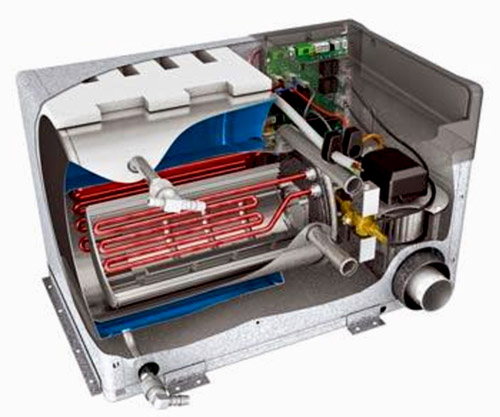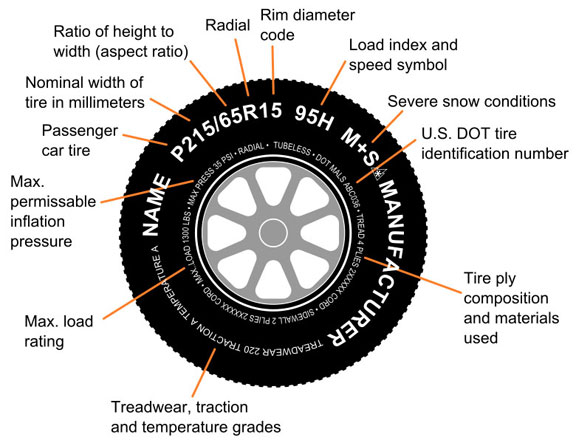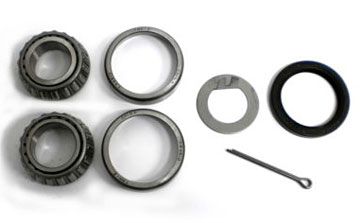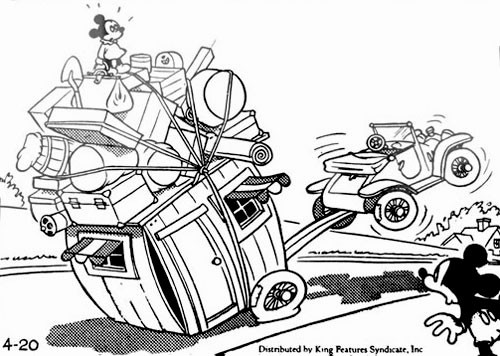RV Basics
Construction & Equipment
Presentation of RVs’ basic technical details important for first time buyers willing to look “deeper” inside of the “box” before making the final decision.
When looking for our first RV, most of us have a list of basic requirements like:
Type of the RV (usually based on towing ability of our primary car (hard-side travel trailer, fifth wheel, pop-up (folding) camper, truck camper or motorhome.
Size (for example a young family with many children or on the opposite side of the spectrum – senior couples enjoying retirement’s opportunities).
The requirement’s list will certainly include practicality and comfort (full or limited kitchen, bath, lounge, sleeping place and its privacy, entertainment center, exterior features, amount of storage, esthetical values (colors, shape, finish….), options and obviously the price range.
However when we are excited with the perspective of buying the new RV, we may easily ignore several “hidden” (underestimated or just unknown to average buyer) aspects of what makes the Comfortable, Lasting and Trouble-Free RV. Well, to make an educated decision it takes some effort and time, but usually later it pays-off big time.
That is why, on these pages we would like to make presentation of important subjects related to RVs. We assume that the educated buyer would like to know more technical details as for example how RVs are built (in terms of which construction materials offer more reliable and/or durable as well as lightweight units), what kind of AC and heating systems are preferred and why, which RV appliances are different from those we have in our residences and why it matters…. And the list will go on and on.
So here it is:
Construction: All-Aluminum RVs

Livin'Lite campers: An example of an all-aluminum frame and floor
Out of many valuable properties of aluminum, the most beneficial for RV business is its light weight, good mechanical strength and resistance to corrosion. Although the aluminum in contact with air forms a thin layer of oxide, due to its high density (and so impenetrability) it actually acts as the corrosion-protecting coating stopping its progress. It’s also worth to mention that the aluminum is easy to process (drilling, cutting, bending….) and reasonable when it comes to joining (welding, bonding….).
See details at: --> All Aluminum RVs
Construction: Fiberglass RVs

No secrets - this is a typical fiberglass panel....
Fiberglass tissue is a thin layer of minuscule glass fibers usually spread over a layer of gelcoat (epoxy or unsaturated polyester resins). Stacking several layers of fiberglass tissues one on top of another (till desired thickness is achieved), results in a strong, rigid fiberglass panel. In RV (and in general in automotive) industry the molding process is used to form the useful shapes. The gelcoat, usually applied in a liquid state, after curing provides the high-quality finished surface that is waterproof and UV resistant. The whole process leads to strong, relatively lite and reasonably inexpensive components (in this case camper’s half-shell)....
See details at: --> Fiberglass RVs
AC Systems for RVs

Example of an ultra-low profile rooftop AC system: Coleman Mach 8
Air Conditioning system became one of crucial elements determining the comfort of life. For most of us the “sauna” is a conscious choice for dozen of minutes, but definitely no one would like to live and sleep in hot and humid environment. And this is especially true when we are on our summer’s RV-vacations and want to enjoy the opportunity of being out.
Let’s start with basics: The cooling capacity of an Air Conditioner unit is traditionally expressed in BTUs/h (British Thermal Units per hour). Do not try to understand the meaning, just keep in mind that higher the BTU number, the AC can lower temperature and remove moisture faster. To some extent the feeling of warm-cold is relative (it’s an individual experience), so when selecting the AC just follow the guidelines for the RV you own (size and thermal insulation), the climate zone and eventually your own preferences.....
See details at: --> RV Air Conditioning systems
RV Heating Systems

Dometic Brisk II roof-mounted AC/Heat-Pump unit
RV heating system depends on how, where and when you would like to enjoy your vacations. I guess the following assumptions are valid for majority of RV-ers:
- The RV-ing season starts in Spring and ends in Fall.
- We are not living or planning to explore Big North including Alaska (at least outside of short, warm summer time).
These greatly simplify heating solutions because the mentioned above conditions imply ambient temperatures above the freezing level. In other words the adequate heating system should be ready to alleviate the impact of chilly weather conditions (let’s say down to low 40’s). As we all know, humid cold weather will have serious impact on our level of comfort and enjoyment when on the road.
Heating Systems for chilly weather conditions
- Heat Strip (add-on to the traditional AC system)
- Heat Pump (integral part of the traditional AC system)
- Conventional LPG Forced-air Heater (often RV’s standard feature)
- Portable Electric Heater
- Portable Propane Heater
See details at: --> RV Heating Systems Review
Hydronic Heaters

Alde's Hydronic heater - cutaway section
Hydronicsystem heats the boiler with non-toxic solution of glycol and water (similar to what you use in your car’s engine cooling system). The hot liquid is then pump-circulated via the system of pipes to small heat exchangers (radiators) located throughout the RV. Each radiator is usually assisted by small, temperature controlled fan so the coach’s interior can warm-up quickly and the temperature profile is more uniform.
Additionally, the hot liquid from the boiler is also branched to the extra heat-exchanger for the heating of fresh water (shower, kitchen and bath sinks…). As the result the Hydronic system can not only efficiently heat coach’s interior but also provide “on-demand” hot water. In other words it acts like (and replaces) two traditional RV units: Furnace and Water Heater.
Well, it's just the basic, the details are amazing...
See more at: --> Hydronic Heaters for RVs
Understanding Absorptive and Compressor Refrigerators
Almost all RV refrigerators are using the same principle of operation: gas absorption. As a refrigerant they commonly use ammonia along with water and hydrogen. Absorption refrigerating systems have many advantages – they are small, operate quietly, do not have moving parts and are inexpensive. On top of that they can run on either electricity or any other source of heat like natural gas, LP gas, kerosene etc… making such system very versatile.
Summarizing – being energy efficient, versatile and “theoretically robust” (thanks to simplicity of construction) absorption refrigerators dominate the RV world.
For most of us it may be surprising that the cooling cycle in absorptive refrigerators starts with heating (see basis of operation below). Indeed, the essential element of any absorption refrigerator is a heater.....
See details at: --> Operation of Absorptive Fridges
You can also find interesting:
RV Tires

How to read the specification of a tire....
Let’s make it clear from the beginning: pop-up campers require tires specially designed for trailers. Under normal circumstances even if they have the same size as your car tires, they are NOT interchangeable. And there are several reasons for that, but all of them have the common denominator – your safety!
The first major requirement for pop-up camper trailers’ tires is their ability to carry trailer’s load. They must be rated for the GVWR of your camper. And here is the first misconception that may cost you money and frustration. The GVWR represents the combined Net Weight of the camper plus all options and extra stuff the camper is loaded with when you are taking on the road.
So what counts is.....
See details at: --> RV Tires
or : --> Motorhome RV Tires
RV Wheel Bearings

Trailer wheel bearing kit....
A wheel bearing is a mechanical element designed to minimize the friction between rotating parts. The most common in automotive industry are ball and roller bearings designed for axial rotation and radial load. They suppress (or rather minimize) the friction between the spindle (shaft) on which sits the wheel (in this case bearing’s inner ring called “front race”) and the wheel (in this case an outer bearing’s ring called “outer race”) by cushioning the contact between them.
Some bearings like for example these installed in car’s front wheels must also support axial forces applied to wheels....
See details at: --> RV Wheel Bearings
Towing Specs

Specs, ratings and good sense for safe towing
Source: www.aluminarium.com
Recognizing importance of towing-related ratings and limits (which are not always clear and for many of us often confusing) we will try to “demystify” the meaning of the most important ones.
Below, you will find definitions and practical notes and details regarding the following parameters: GVW and GVWR, GAW and GAWR, GCW and GCWR, Curb Weight, Dry Weight, UVW, Cargo Weight, Payload, Tongue Weight (Hitch Weight or Ball Weight) as well as King Pin Weight.
We also provide several tips for RV-ers, especially dedicated for these starting their “road adventure”.....
See details at : --> RV Towing Ratings
Buying the Lite Travel Trailer
.........The next step in your journey is to correctly calculate the maximum amount of weight you are able safely tow with the car or truck you will be using. It’s an important step because these days more and more often we use our standard minivans, SUVs or even family cars to tow the trailers. That is a big difference compared to the past approach of using a heavy-duty truck for towing, that usually was “up to the task” with a good safety margin!
This exercise starts in your Car Operating Manual or, if you do not have one - at your car’s dealer. The number you need is:
Maximum weight of the load that can be towed by your car (Tow Vehicle)!
Let’s call it TR-GVWR (Trailer Gross Vehicle Weight Rating).
This number can be found by knowing the following two components:
a) TV- GCWR (Tow Vehicle Gross Combined Weight Rating) – this is the combined maximum weight of the tow vehicle and the trailer (assuming that the trailer has its own brakes!).
b) TV-AW (Tow Vehicle Actual Weight) of your tow car (when going on the trip).....
See details at: --> Buying Lite Travel Trailer
.